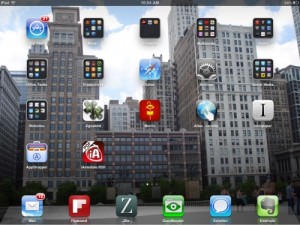I had never taken the time to polish and publish my notes from TEDxOKC last spring. Tonight’s tragic news that NYTimes Reporter Anthony Shadid suddenly passed away in Syria is prompting me to dust off my notes from his incredible talk and finally publish them as I took them. I will never forget his talk that day, his sudden hope and optimism for the future of Middle East. Portions from his talk are posted online, and I’m embedding that video below. My notes from Anthony’s talk appear below the video. To his family, friends, and colleagues, my deepest sympathies, thoughts, and prayers. The world has lost an incredible journalist.Â
My Notes
Journalist.
http://en.wikipedia.org/wiki/Anthony_Shadid (Had to look him up; out of the loop on the news the past few weeks)
Stories about people. Change in Arab world will be tragic, but he feels optimistic. We’re on the verge of a moment in the Arab world that we haven’t seen since WWI.
Relationship bw Arab world and America being redefined. The world and the Arab world.
War creates misunderstanding and conflict. Dehumanizing. Past 10 years. Both for Arabs and Americans.
He felt like he was witnessing an epiphany in Egypt. In Libya in a jail cell. 1 million people there trying to imagine a different country. Imagining identities, culture, society. People were trying to imagine Cairo, Egypt. Young people believed they were better than what the government told them. Walking into a different world. Power of imagination. Crossing a border from old Cairo into new Cairo into Tahrir Square. The imaginative Cairo. Power of Egyptians to reclaim their destiny and narrative. It’s revolutionary. Notion of identity is changing. Gives me hope.Are we Sunnis. Shiites? 18 different sects. Identification by religious sect determines you. It suffocates you.
Tahrir Square. We’re not Sunni or Christian. We’re citizens of Egypt. Identity is going to be broader not smaller.Â
Ability to forge a new identity. For the first time in a region, a relationship that has caused so much hardship. It’s about to change forever. To be able witness and bring meaning to what’s going on. Libya is an example of how difficult it is going to be. Bloody. But Tahrir Square. Optimism. Hope.
Dignity more important the wealth.Â
